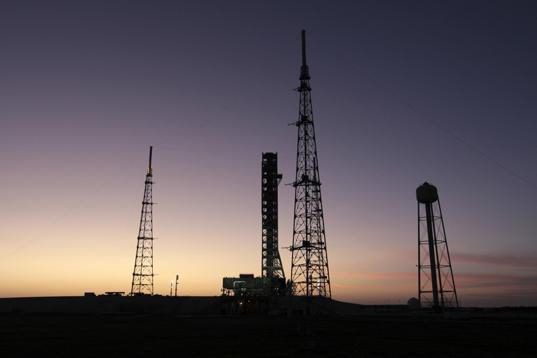Jason Davis • Feb 03, 2015
NASA Budget Lists Timelines, Costs and Risks for First SLS Flight
NASA will set the Space Launch System's inaugural flight date at the end of this year, according to the agency's 2016 budget request, which was released on Monday. The 25-day mission, which will carry an uncrewed Orion spacecraft to lunar orbit, is currently scheduled for no later than November 2018. That date, however, is subject to a series of design reviews that will be conducted throughout 2015. The reviews are expected to wrap up in December, at which point NASA will set a date for the flight, dubbed Exploration Mission 1 (EM-1).

EM-1 timelines, costs and project risks are laid out in NASA's 713-page budget request, which is subject to funding adjustments by Congress. The budget says a flight date will be set after all three mission components—SLS, Orion, and ground systems—have completed their Critical Design Reviews. These reviews, called CDRs, are conducted by independent panels before vehicles and systems enter their final design and fabrication phases.
The first EM-1 component up for CDR is the Space Launch System. The review will take place sometime in July through October, wrapping by the end of NASA's 2015 fiscal year. Prior to the full CDR, a separate design review will be held for the rocket's payload and integration systems, according to correspondence with a NASA spokesperson.
Orion's CDR will begin after the start of fiscal year 2016 in October, and conclude by the end of December. Before then, Orion must clear another milestone known as Key Decision Point C (KDP-C), which should further refine the spacecraft's cost and timeline estimates. Orion's KDP-C is expected in quarter three of fiscal year 2015—April through July.
Exploration Ground Systems include all of the facilities at Kennedy Space Center required to launch the rocket, such as the Vehicle Assembly Building, Mobile Launcher and Launch Complex 39B. The CDR for ground systems is not expected until December, shortly before NASA sets the launch date of EM-1.
The cost of SLS development from 2013 through EM-1—assuming a November 2018 launch date—is pegged at $7 billion. NASA is asking for $1.4 billion for next year's SLS work—a 20 percent drop from last year's $1.7 billion.
Ground systems costs from 2014 through EM-1 are set at $1.8 billion. The fiscal year 2016 request calls for $410 million—a 17 percent increase from 2015. Five-year budget projections increase steadily through 2020, peaking at $458 million. A large amount of work remains before Kennedy Space Center's shuttle-era facilities will be ready to launch SLS.
Orion's lifecycle cost estimates include EM-2, a second lunar flight that will carry astronauts. Because the capsule has yet to clear KDP-C, the budget numbers are still fuzzy—estimated somewhere between $8.5 and $10.3 billion. The 2016 budget request is for $1.1 billion, down 8 percent from last year.

While NASA says SLS and ground systems will be ready by November 2018, Orion remains a question mark. The EM-1 Orion spacecraft will fly with the new European-built service module, which is currently under development. In the 2016 budget request, the service module is not specifically identified as a schedule risk, though "spacecraft component and subsystem testing" is. Orion's Avcoat heat shield is also shown as a risk, pending a possible redesign in preparation for EM-1.
For the Space Launch System, NASA believes they now understand a problem in which small voids were found between the propellant and liner in the vehicle's solid rocket boosters. A full-duration test firing scheduled for March is expected to provide more insight. Additionally, the budget request lists Boeing's completion and delivery of the rocket's core stage as a holdup risk.
Finally, one of the biggest challenges for Kennedy Space Center's ground systems team is having enough time for integrated SLS testing at the Vehicle Assembly Building and launch pad. There is also an outstanding concern over whether Launch Complex 39B's liquid hydrogen storage tank has enough capacity to quickly refill the rocket's tanks after a launch scrub. A possible solution involves outside contractors trucking in 28 additional storage tanks to support the launch.


 Explore Worlds
Explore Worlds Find Life
Find Life Defend Earth
Defend Earth


